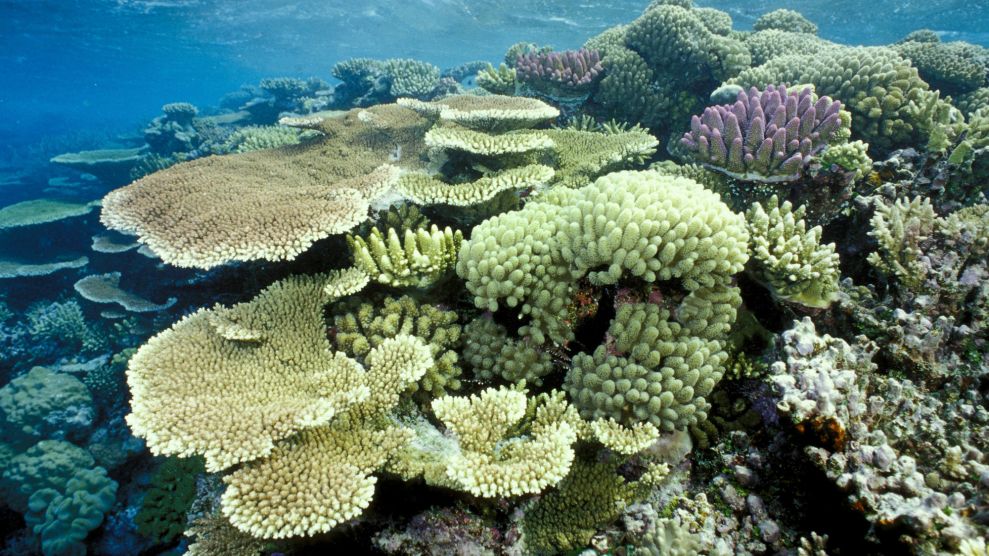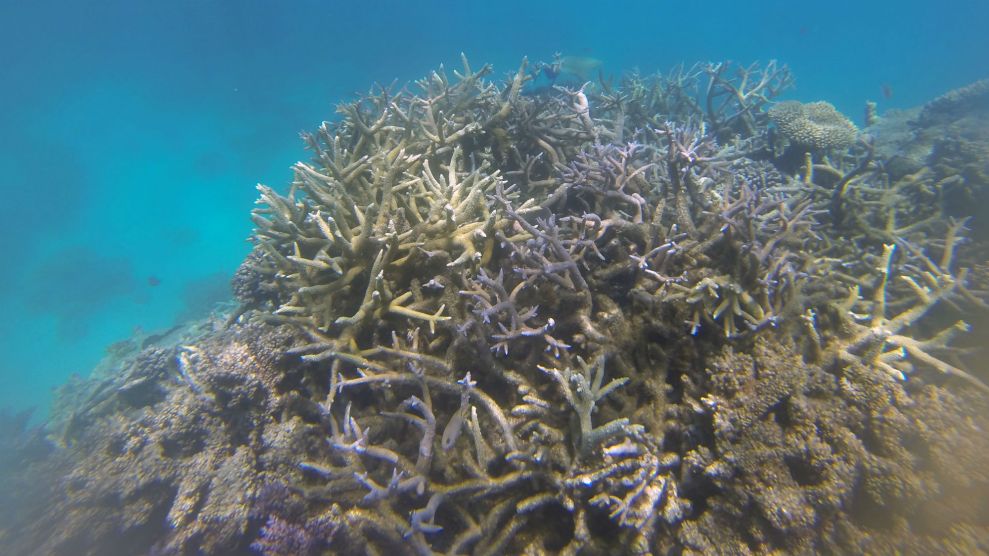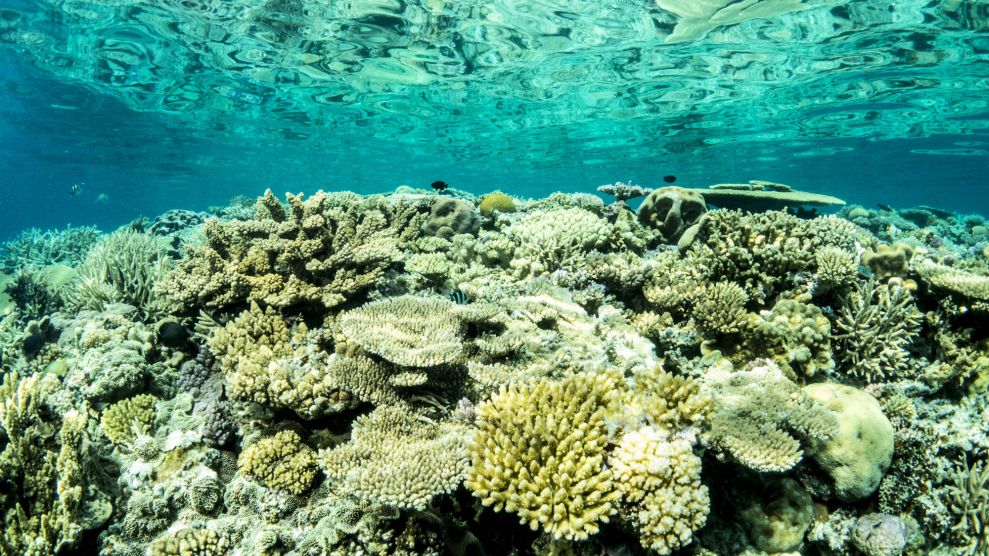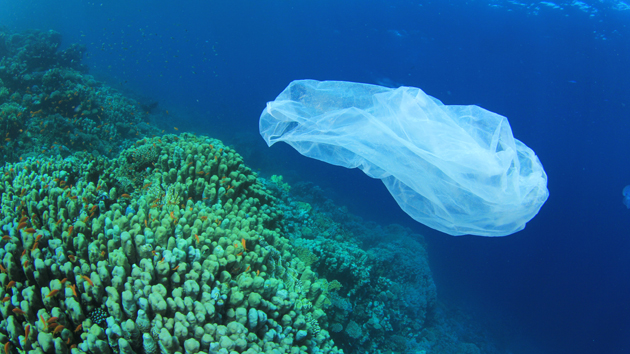The Great Barrier Reef is called “great” for a reason. As the world’s largest reef system, it’s half the size of Texas, home to about 10 percent of the ocean’s fish species, and generates billions of tourism dollars annually. Plus, it’s damn beautiful.

The Great Barrier Reef in 2012
Mark Conlin / VW Pics via ZUMA Wire
In recent years, however, the reef has lost half its coral in two consecutive mass bleaching events, caused by rising ocean temperatures as a result of (you guessed it) climate change.
Reefs are created by coral building polyps and photosynthetic algae, working together in a symbiotic relationship. When corals are stressed, the polyps can expel their colorful algae, dulling their brilliance and, in extreme cases, turning reefs bone white. That’s why big parts of the Great Barrier Reef now look like this:

Bleaching on the Great Barrier Reef
Shutterstock
But, there is hope! According to a study published Tuesday in the open-access journal PLOS Biology, small clusters of the reef are ideally situated to re-populate the bleached areas with the organisms that make coral, and make it beautiful.
Of the 3,800 individual reefs that make up the Great Barrier Reef, scientists identified 100 that live in naturally cooler areas—and are therefore healthy—and that sit near ocean currents that can transport fertilized coral eggs to new locations across the reef.

A healthy coral reef in the Great Barrier Reef system
Peter J. Mumby
“Finding these 100 reefs is a little like revealing the cardiovascular system of the Great Barrier Reef,” said author Peter Mumby, a professor at the University of Queensland, in a press release. “Although the 100 reefs only make up 3 percent of the entire GBR, they have the potential to supply larvae to almost half (45 percent) of the entire ecosystem in a single year.”
Although the findings are cause for celebration, the authors warn that the corals will only have a real chance at recovering through local protection and global efforts toward “serious mitigation of climate change.”
















